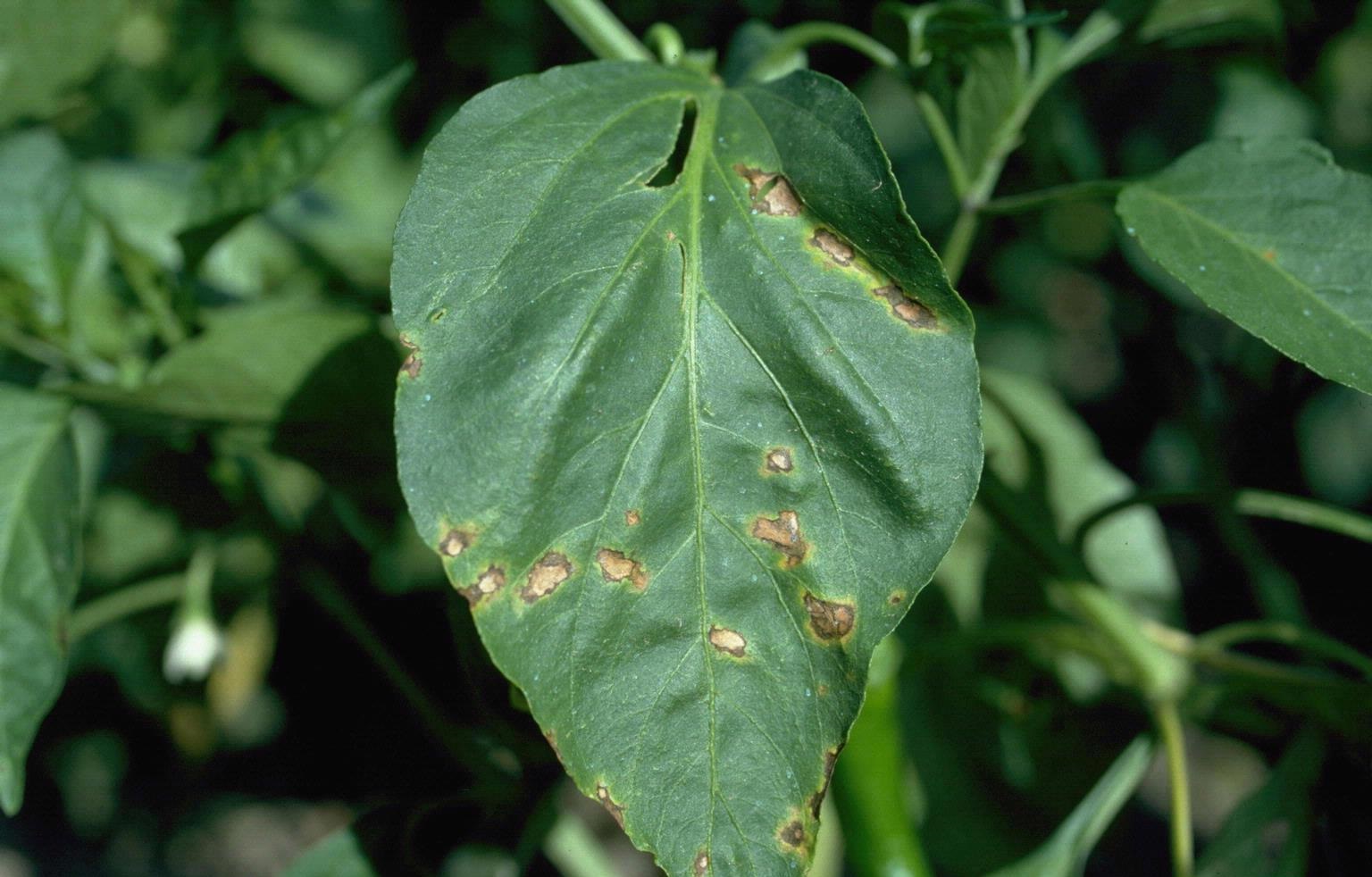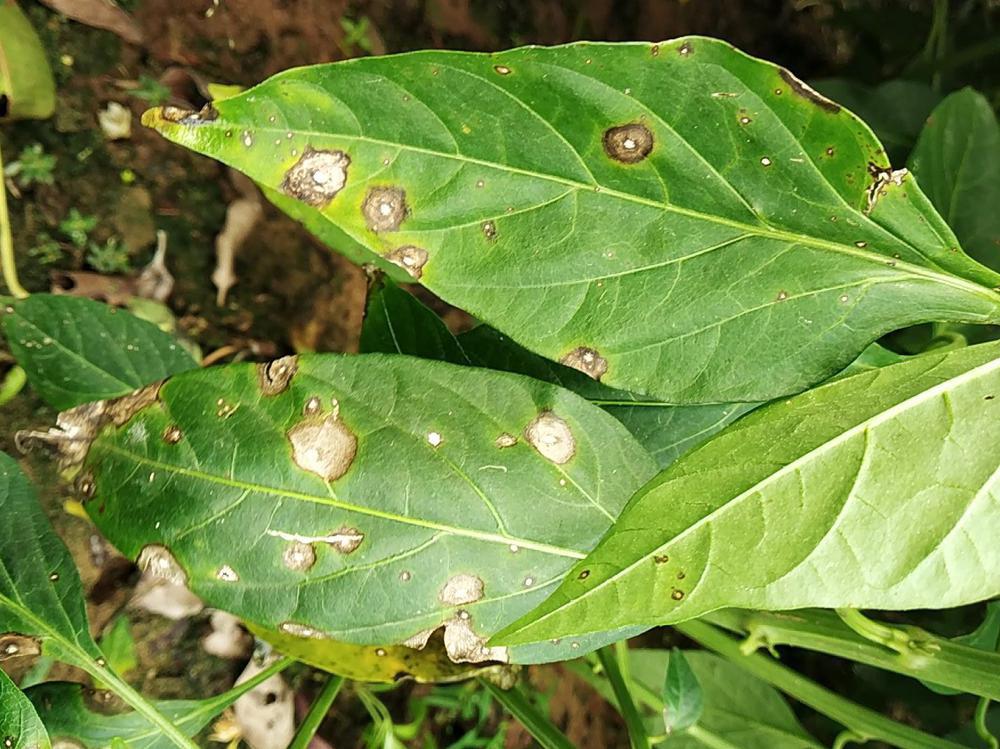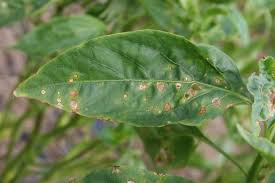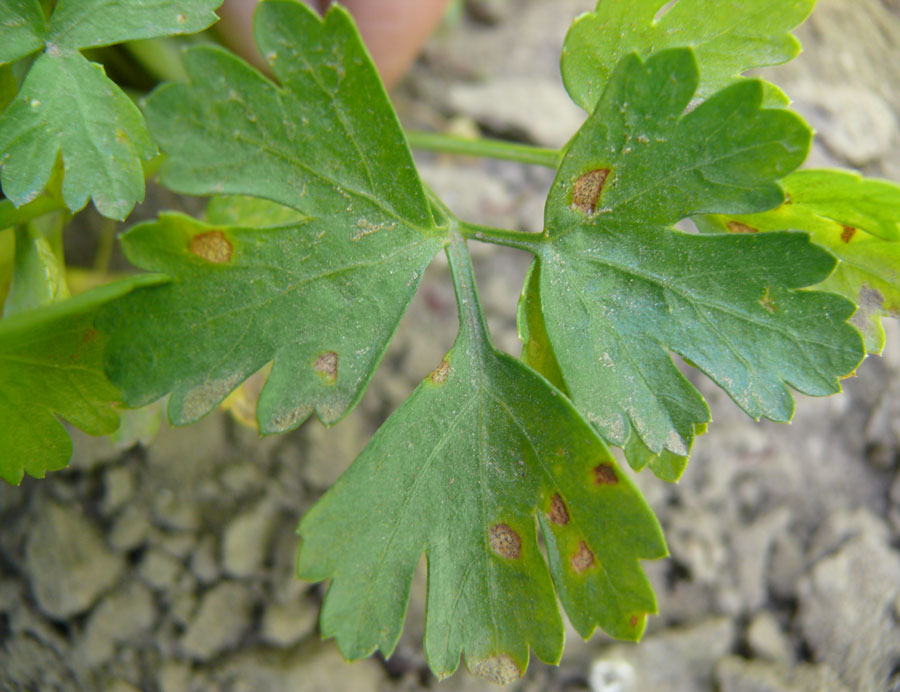- The field should be free from old crop residues and weeds.
- Streptomycin sulfate 90% + tetracycline hydrochloride 10% W / W @ 24 gm / acre or
- Kasugamycin 3% SL @ 300 ml / acre or
- Spray kasugamycin 5% + copper oxychloride 45% WP @ 250 gm / acre in 200 liters of water.
- For this disease by biological means, spray 500 grams Pseudomonas fluorescens and 500 ml Bacillus subtilis in 200 liters of water per acre.
- Streptomycin should not be sprayed after fruit formation.
Know the symptoms of Bacterial leaf spot disease in Chilli crop
- The first symptoms appear as small yellowish-green spots on the new leaves and these leaves are deformed and twisted.
- Later on, the leaves show small circular or irregular, dark brown or black smooth spots. As these spots grow in size, the middle part becomes lighter and the outer part becomes darker.
- Finally, these spots turn into holes because the middle part of the leaves dries up and bursts.
- In severe infection, the affected leaves fall prematurely.
- Submerged spots form round, bulging, yellow edges on the fruit.
Management of Bacterial leaf spot in chilli
- Field sanitation is important. Also, seeds must be obtained from disease-free plants.
- The nursery should be raised on the soil where chilies were not grown for several years.
- Spray of Streptomycin Sulphate IP 90%W/W+Tetracycline Hydrochloride IP 10%W/W @ 20 gm per acre OR
- Kasugamycin 3% SL @ 30 ml per acre OR
- Kasugamycin 5% + Copper Oxychloride 45% WP @ 250 gm per acre.
Like and share with other farmers by clicking on the button below
Sharesymptoms of Bacterial leaf spot in chilli
- The leaves exhibit small, circular or irregular, dark brown or black greasy spots. As the spots enlarge in size, the center becomes lighter surrounded by a dark band of tissue.
- The spots coalesce to form irregular lesions. Severely affected leaves become chlorotic and fall off. Petioles and stems are also affected.
- Stem infection leads to the formation of cankerous growth and wilting of branches. On the fruits, round, raised water-soaked spots with a pale yellow border are produced.
- The spots turn brown developing a depression in the center wherein shiny droplets of bacterial ooze may be observed.
Control of bacterial leaf spot in coriander
- Choose healthy and disease-free seeds for sowing.
- Irrigate only if needed and avoid giving extra water.
- Avoid excessive use of nitrogen fertilizers, as more nitrogen can be responsible for the development of the disease.
- When disease occurs on coriander plant then spray copper oxychloride 50% WP @ 400 -500 gram per acre.
Like and share with other farmers by clicking on button below
Share




